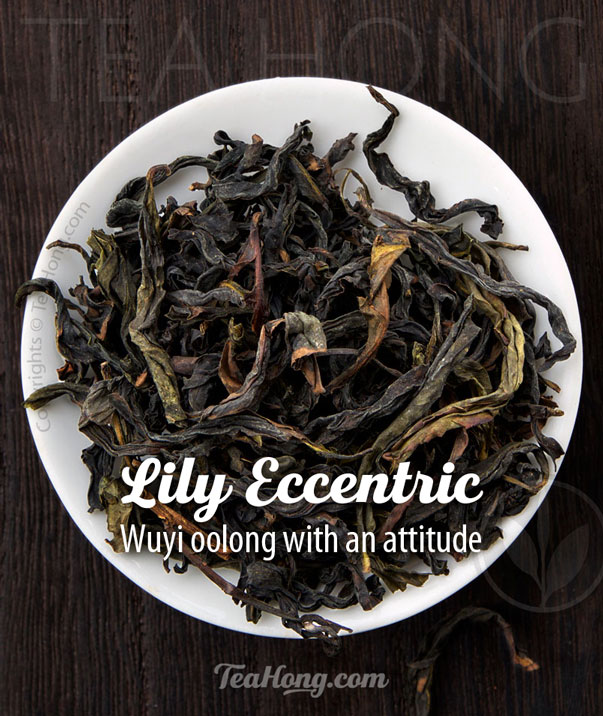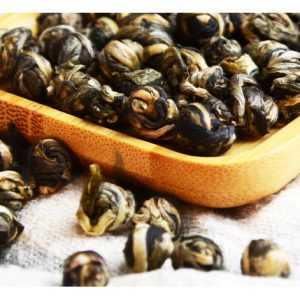Home › Dialogues › Tea Reviews › About Golden Tip Pu'er
- This topic has 8 replies, 5 voices, and was last updated 11 years, 6 months ago by
sa11.
-
AuthorPosts
-
-
2012.09.10 at 10:29 am #8511
Tea Man Bill
ParticipantA reader posted the below question in our Facebook page, referencing to our article on Golden Tip Pu’er. Since it will take a bit of length to respond to it, I have decided to post it here. I’ll try to write some of the things I understand first, all others are welcome to join in:
I ordered such a tea some years ago, looks exactly like Fengqing golden tips (obviously from a small leaf varietal, unlike the big leaved assamicas that are most often used for Yunnan Gold teas. Same shape and size as fengqing tips, but you could see it had been processed, the tips were no longer shiny golden, but dark and “rusty”. It is a very strong shu-type puer and I have to wonder, did they use material that had been produced as black/red/红 tea to turn it into a sort of Pu’er?
-
2012.09.10 at 10:50 am #9734
Tea Man Bill
ParticipantThe processing of Golden Tip Pu’er, like many other shu cha type of pu’er, does have some similarity as in the processing of black tea: they both involve similar kind of rolling of the leaves using larger rolling presses. However, the timing, length of oxidation (before the tealeaves are taken to pile-fermentation) and subsequent steps are different.
The step of rolling does leave behind the most visible mark and therefore can easily mislead one into the thinking that the pu’er and the black tea are the same.While it is true that a fully processed black tea can be further post-fermented, but the taste will be too flat considering how much softer the process normally gives to the strong tasting original materials. It would be a waste of processing labour and energy as well. -
2012.09.10 at 12:27 pm #9735
CHAWANG
Participanteven shu cha puer has different types, some use same tea leaves as black tea, some use others only for pu’er. some use tealeaves too big for good grade black tea. some use same kind of tea leaves for sheng cha. they are different
-
2012.09.11 at 2:25 am #9739
Leo
ParticipantThe phrase “small leaf” variety is often very misleading. It says nothing more than the size of the leaves at the time of the picking. A number of cultivars used for making either black tea or pu’er tea are “small leaf”, yet they are of the assamica variety or a cross of it. The fact is, there are also many cultivars of the assamica variety which leaf sizes differ dramatically. As in the sinensis variety.<div><div></div><div>Today, a lot of the Yunnan “Golden” (see review in Tea Guardian), esp those almost purely of Golden shoot leaves, are produced from crosses, some even purely from sinensis cultivars, so that the leaves size can be a lot more even and the downy hair much more visually pleasing.</div><div></div><div></div><div>Many of the shu cha pu’er, particularly those that are used in exports, are blended. i.e. there could be more than one type of cultivars used. The production style of the sources of the materials before the blending can differ quite dramatically as well. </div></div>
-
2012.10.01 at 5:13 pm #9827
sa11
ParticipantI read in a tea site that puerh (puer? the same?) has less caffeine. Is that true?
-
2012.10.03 at 3:41 am #9830
Leo
ParticipantCaffeine content in shu cha type of puers does get lower through properly conducted post-fermentation. Findings in various reports vary so I cannot come to any conclusion as to how much lower yet. Also, not all shu cha in the market are properly post-fermented. That said, a lot of teas in the market are not properly processed or handled one way or the other anyway. (Have I become a grumpy old man?)
-
2012.10.03 at 10:41 am #9835
Hokusai
ParticipantMaybe wrong processed puer is not only about caffeine, maybe bad taste quality and bad hygiene are more important consideration.
-
2012.10.05 at 7:12 pm #9838
sa11
ParticipantThank you Leo. I think I’ll explore your shop to get one of the pu’ers.
-
2012.10.23 at 3:25 am #9863
sa11
ParticipantI want to share with you all that Pu’er is a very special tea. It can be so dark that I have never, never known a tea like that. It can still be quite smooth when it is very dark. That is why I think it is so wonderful.
There is a one thing that Leo wrote about but I had not paid attention to: the portion of tea closer to the bottom of the pot is stronger. Now this is not so obvious with other tea varieties, but it is so dramatic in Pu’er! It took me a while before I could figure out to use another pot to hold the tea first to even out the strength before pouring into the cups. Please if you are using Pu’er, don’t forget to do that. This can make a big difference in the taste!
-
-
AuthorPosts
- You must be logged in to reply to this topic.










